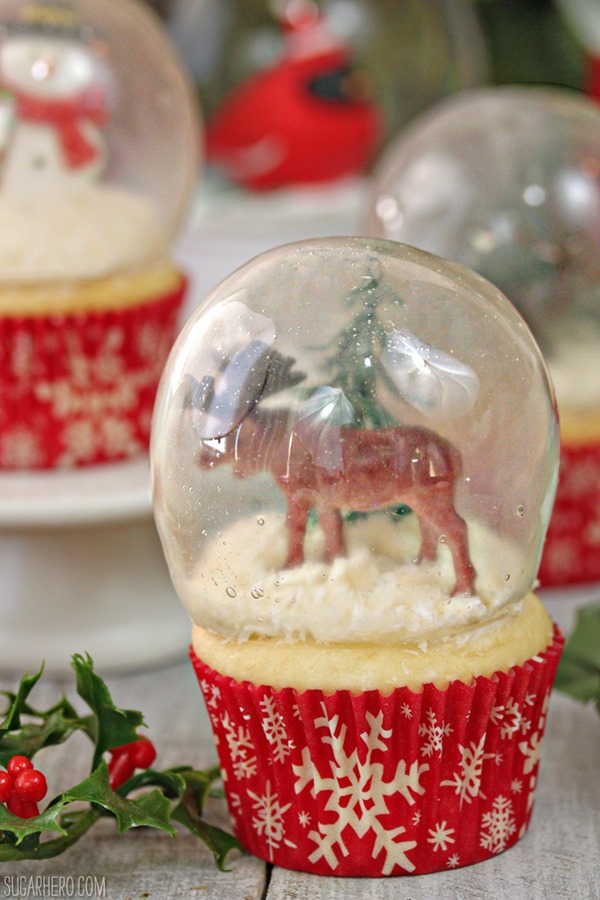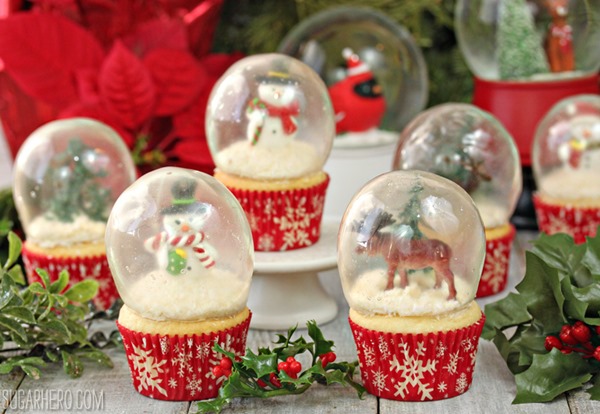HOW TO MAKE GELATIN BUBBLES
For the best results, I highly recommend using platinum gelatin sheets for this recipe. If you are only able to find a different grade of gelatin sheet, you might have to tweak the gelatin/water ratio, or do a little experimenting to see what works best for the type you have. If you only have access to powdered gelatin, be aware that the bubbles will be cloudier and not as transparent. I've included brief instructions for making these with powdered gelatin in the Note below.
Author: Elizabeth LaBau
Serves: 8
Ingredients
- 12 sheets of platinum (230+ bloom) gelatin
- Ice water
- 8 water balloons
- Wooden skewers, tape, and styrofoam
- Nonstick cooking spray
Instructions
- Fill a bowl with ice water. Add the gelatin sheets one at a time, making sure that they are separated and not in a big clump, and submerge them in the cold water. Let them sit and soften for 10 minutes.
- Once they are soft, remove the sheets from the water and gently squeeze out all the excess water back into the bowl. Place the wrung-out gelatin sheets and 3 tbsp of water from the bowl into a small saucepan.
- Heat the gelatin over LOW heat, swirling the pan occasionally, until the gelatin is melted. You are not trying to get it hot, so watch it carefully and remove the pan once the gelatin is mostly melted! If it is warm, let it cool until it is no longer warm to the touch, but is still fluid. If it starts to set at any time during this process, return it to low heat briefly just until it becomes liquid again.
- Blow up 8 water balloons to your desired size and tie them tightly. Securely tape them to long wooden skewers. Spray nonstick cooking spray on your hands, and rub your hands together until most of the oil is absorbed. Gently rub your hands on the balloons, transferring just a little oil to them—they should not be shiny or greasy at all, or the gelatin won't stick. You should be able to do several balloons before spraying your hands again.
- Transfer the gelatin to a small cup or bowl, narrow enough so that it will be fairly deep when you dip the balloons. Dip one in the gelatin entirely, turning it until it is nearly covered—it's okay to leave the part near the knot/skewer uncovered. Let the excess gelatin drip back into the bowl, and once it has stopped dripping, stick the skewer in the Styrofoam board. Repeat until all of the balloons have an initial gelatin layer.
- Let the balloons set for about 10 minutes, until they are no longer tacky to the touch. If necessary, re-warm the gelatin just until it is fluid, but do not make it warm again—if it feels warm, let it cool to room temperature. Re-dip the balloons a second time, then place them back on the Styrofoam board. Let the gelatin balloons sit at room temperature for about 24 hours. If you want to speed up the process, you can place them in front of a low fan, which might cut your time in half or even a quarter.
- The balloons are done when they feel hard, like plastic or egg shells, when you tap them with a fingernail. They should not feel soft at all. To release them, cut a hole in the balloon near the stem. Ideally, the balloon will shrivel up and release easily, pulling itself away from the sides of the gelatin. If it doesn't pull away right away, don't fret and don't pull on it yourself. Set the balloon aside and work on the others. The balloon will naturally shrink on its own and gradually pull away from the sides. It might take 5 minutes or it might take 45, but eventually the balloon will pull away from the gelatin.
- Gelatin balloons can be stored indefinitely in an airtight container at room temperature.
Notes
To use powdered gelatin, combine 1 part unflavored powdered gelatin with 2 parts cold water. (1/4 cup gelatin and ½ cup water will yield about 8 balloons.) Whisk the gelatin and water together, then let it sit and soften the gelatin. Once the gelatin has absorbed the water, gently heat it up in the microwave in short intervals. Try to swirl the gelatin rather than stirring it, since stirring can lead to a lot of air bubbles. Once it's entirely melted, let it cool to barely warm before dipping the balloons as described above. Reheat the gelatin as necessary to get a dippable consistency.
SNOW GLOBE CUPCAKES WITH GELATIN BUBBLES
Author: Elizabeth LaBau
Serves: 8
Ingredients
- 8 cupcakes, baked and cooled
- 1 cup frosting of your choice
- Flaked coconut
- Snow globe-appropriate cupcake toppers like snowmen, Santas, reindeer, trees, etc
- 8 gelatin bubbles
Instructions
- Transfer the frosting to a piping bag fitted with a round tip, or a plastic bag with a hole cut in the corner. Pipe a thin ring of frosting on top of the cupcakes, leaving a margin around the edges so that the gelatin bubble can enclose the frosting entirely.
- Roll the top of the cupcakes in the flaked coconut. Add a cupcake topper or two to each cupcake—if it helps, you can glue a toothpick onto the back and use that the secure the toppers to the cupcakes.
- Trim off the bottom of the gelatin bubbles, making a hole big enough to fit on top of the cupcake around the frosting. Carefully place a bubble on top of each cupcake. The bubbles will last indefinitely, but if they're exposed to a lot of moisture in the refrigerator or the frosting, they might eventually start to soften and lose their shape.



No comments:
Post a Comment